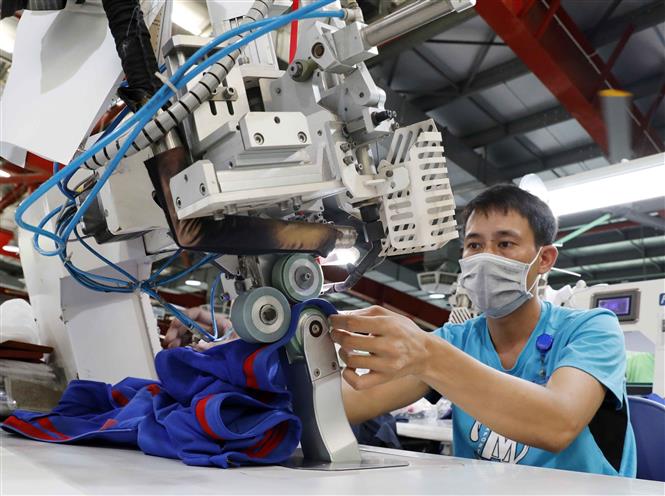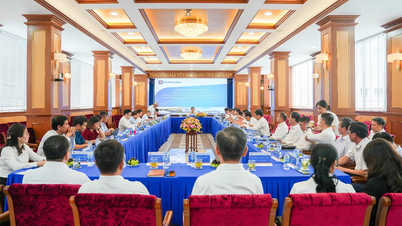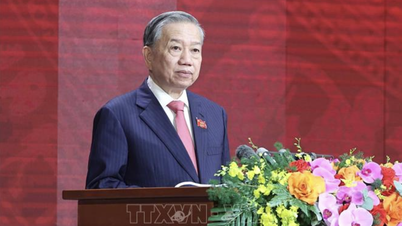
Sewing export goods at Maxport Thai Binh Company. Photo: Tran Viet/VNA
The expected target by 2030 is to increase labor productivity by over 6.5% per year. In particular, key economic zones and 5 centrally-run cities aim for a higher growth rate than the national average, aiming to put Vietnam in the top 3 countries in Southeast Asia in terms of labor productivity growth. Along with that, it is proposed to increase the rate of enterprises with innovative activities from 15% per year to 2025 and 20% per year to 2030. Mr. Dau Anh Tuan, Head of the Legal Department and Deputy General Secretary of the Vietnam Federation of Commerce and Industry, assessed the current labor productivity situation and spoke out about the challenge of low labor quality in many enterprises. He shared his views on the need to assess labor quality through labor productivity, emphasizing that only strong labor productivity growth can help Vietnam compete with other economies. This is a big challenge when the proportion of workers with college or university degrees or higher accounts for only about 15%. Labor quality can also be considered through the measure of labor productivity, expressed through the number of products created per unit of labor or labor hours. Dr. Nguyen Bich Lam, former Director General of the General Statistics Office, assessed that although Vietnam's labor productivity has narrowed the gap with many countries in the ASEAN region, it is still much lower than that of developed countries. He emphasized the issue of labor structure by economic sector and limitations in the application of technology and techniques in production and business, and pointed out factors that negatively affect labor productivity. For Dr. Nguyen Bich Lam, in order to adapt to changes in the world economy and improve competitiveness, it is necessary to periodically evaluate and update the National Program on Labor Productivity. He recommended rapid institutional reform, effective use of all resources, building a synchronous and stable legal environment, as well as creating opportunities and challenges for businesses. Dr. Nguyen Bich Lam also proposed the need to perfect the export strategy, focusing on digital and high-end technology industries, and encouraging businesses to invest in innovation. He emphasized that education and training are key factors, especially for emerging talents, to meet the needs of a developing economy. Businesses also need to specifically assess each stage of the production process to restructure their labor picture; develop automated production processes or invest in industrial robots and artificial intelligence to help improve labor productivity, reduce product costs and enhance business competitiveness./.Huyen Anh


































































![[Photo] Party and State leaders visit President Ho Chi Minh's Mausoleum and offer incense to commemorate Heroes and Martyrs](https://vphoto.vietnam.vn/thumb/402x226/vietnam/resource/IMAGE/2025/8/17/ca4f4b61522f4945b3715b12ee1ac46c)


![[Photo] General Secretary To Lam and other Party and State leaders attend the ceremony to celebrate the 80th anniversary of the Vietnam People's Public Security Forces' Traditional Day.](https://vphoto.vietnam.vn/thumb/402x226/vietnam/resource/IMAGE/2025/8/17/1f782c0c9f37400d86b29aefbd8a891b)































Comment (0)